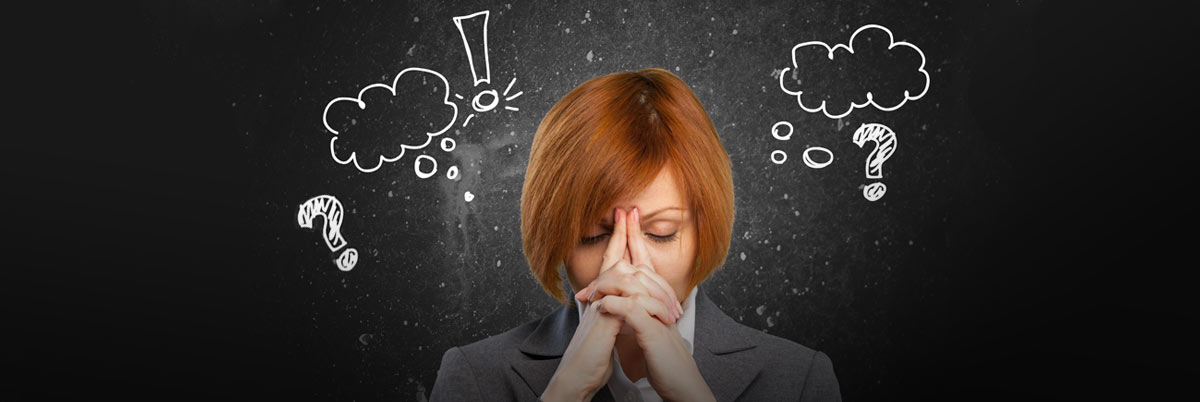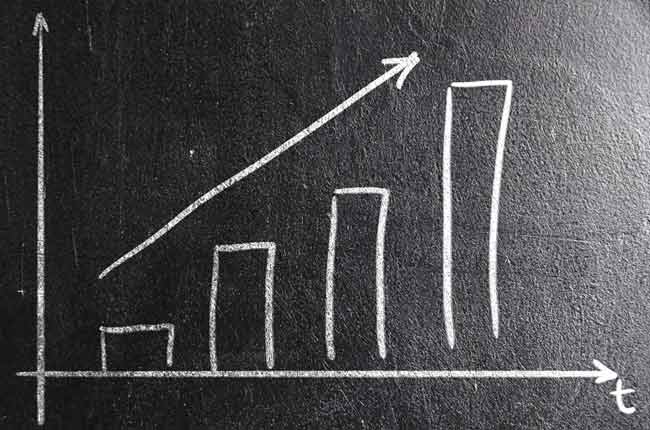
What do Emotions have to do with Decision Making?
By Karl-Heinz Oehler, Managing Partner, Denison Consulting Europe
All decisions carry emotions because they all contain elements of risk. Data, facts, analysis are great contributors to the decision-making process. However, they are descriptors of the past. Decision making is about the future, hence, it deals with uncertainty—especially in highly complex situations. Uncertainty, in turn, carries risk, and taking risk involves emotions.
Constantly changing global market conditions create the imperative to build a change-oriented corporate culture. This requires highly effective decision-making capabilities. Early awareness and understanding of risk and its emotional impact on decision making is critical to organizational effectiveness.
The Decision-making Processes
At any moment in time leaders face situations requiring a new decision. It may have to be taken immediately or it may require a great deal of reflection. It may be one the leader can make alone, or it may require others’ expertise or buy-in and support.
Process matters. Having a repertoire of decision-making models to choose from—authoritative, consultative, majority vote, etc.—is like having a toolbox with many tools. As Levi Nieminen points out in a recent Transform article,[1] some processes, whether alone or in combination, are more appropriate to certain contexts than others. He provides helpful criteria for determining which processes are likely to be most effective in differing circumstances. Using multiple decision processes provides agility.
Decision Making: Don’t forget the Emotional Component
Whatever processes you use, it’s important to recognize that decision making is not a solely rational endeavor. It is also an emotional one. In fact, though we may not want to admit it, decision making is often primarily emotional. This has been demonstrated by research in both psychology and neurobiology.

The right side of our brain, the emotional/artistic side, plays an important role in decision making. Neuroscientist Antonio Damasio made a groundbreaking discovery while studying people with damage in the part of the brain where emotions are generated. Damasio’s subjects seemed normal, except that they were not able to feel emotions. This led to something else peculiar: they had great difficulty making decisions. They could describe in logical terms what they should be doing, yet they found it very difficult to make even simple decisions, such as what to eat.
This helps explain the findings of psychologists such as Daniel Kahneman (2002 Nobel Laureate in Economics) and the late Amos Tversky, who conducted seminal research in the field. Some of their work highlights the role of fear in decision making. They demonstrated, for example, that we often let our fear of low-probability, negative outcomes outweigh the potential for high-probability, positive outcomes when we make decisions.
Kahneman also points out that repetition can outweigh logic. “A reliable way to make people believe in falsehoods is frequent repetition, because familiarity is not easily distinguished from truth.”[2] Marketers and authoritarian institutions figured this out a long time ago!
If you say to yourself or to your team, “Let’s leave our emotions at the door,” you are kidding yourself. It may sound good, but we simply don’t work this way! Why? Because all decisions involve risk. The greater the risks, the greater the emotional element. This is influenced by personality, of course, and it can be tempered by whether risk-taking is rewarded or punished in the organizational context. But, in general, higher risk leads to stronger and more negative emotions. The degree of risk (or the perception of it) is influenced by factors such as the amount of information available and how soon a decision must be taken.
Emotion Driver: RISK
Assume you’ve written a spec outlining an IT product or service you need. You get two offers with identical price tags. Proposal A meets 100% of your requirements. Proposal B meets 80%. Which would you choose? Wait. I forgot to tell you that Proposal A is from an emerging, successful startup. Proposal B is from a well-known, “three-letter” company. Now which would you choose? As the old saying goes, “No one gets fired for choosing . . . a well-known, ‘three-letter’ company.” That’s an emotional decision based on risk, not on purely rational analysis of the product offering.
Data vs. Deadline (Satisficing vs. Maximising) and Self-Fulfilling Prophecy
Let’s explore how decisions are made at different levels and the specific problems that can happen.
First-level or front-line leaders often face urgent situations requiring fast decisions. The decisions typically are relatively technical, operational ones, and they may have high stakes in terms of budget, timing, or other critical criteria. In these situations, lack of information often results in a limited understanding of the situation. This is called a “satisficer” scenario.[3] Because of your deadline, you are aiming for a quick, satisfactory result rather than demanding an optimal, though slower or delayed, solution. The downside is that a satisficer decision carries a lot of risk.
The further leaders progress along their career paths, the more they move away from immediate action. Decisions are typically more integrative and strategic in nature, with long-term impact, requiring data from many people and perspectives.[4] Gathering a lot of information to gain a deep understanding of the situation is called a “maximiser” approach (i.e., maximising chances of success by minimising risk).

You can generate more options, and take more care to evaluate the pros and cons of each choice. Maximiser decisions carry less risk, but slow down decision making (which, of course, has its own risks).
Interestingly, there is research which shows that, though maximisers feel confident about their decisions the more data they have, having more data doesn’t necessarily correlate with better insight or positive outcomes. What maximisers and satisficers have in common is the inherent risk that decisions bring with them.
They also share a common tendency toward a kind of self-fulfilling prophecy: We tend to look for data that supports our emotional preferences and discount what does not support them. (Google has figured this out! They present ads for items similar to ones you’ve already looked for, not for radically different alternatives.)
Private vs. Public Decision-Making Styles
Many leaders use a different decision-making style in private than they do in public. The private style (or operating style or thinking style) is the one a particular leader finds most natural—a sort of “hard-wired,” personal mode. A leader typically uses it when working alone or when working with people they know very well and see on a regular basis.
The public style (or role style or leadership style or interpersonal style) is a learned, “soft wired” style used when leaders interact with others and wish to create their best impression or influence them. Leaders are likely to use this style in formal situations or with people they work with infrequently. Leaders who are members of a new team or a team that has recently added members, may use this style too.
The public style is influenced to a degree by the culture of the organization in which the leader works. If you move to a new or job or environment, for example, you may change your public decision-making style to fit the new environment. The organizational reality and culture will shape how you analyse and present the data and the decision. However, across most cultures, the best leaders use a more participative style in order to vet decisions and gain buy-in to the change.
How risk averse are you and your team?
Some leaders operate in cultures that reward thorough analysis and risk avoidance. These leaders will take reflective approaches in public, even if their private style is more decisive. Other cultures may value quick decision making.
Their leaders may want to come across as very decisive in public, whilst being more reflective in private.
Accommodating a public style which differs from your hard-wired, private style may create stress—another emotional factor to recognize in decision making. The different styles—satisficer vs. maximiser and private vs. public—are based largely on personal and corporate risk tolerance, and play significant roles in determining the acceptable parameters to apply to decision making in different situations and environments.
Process vs. Emotions
Regardless of how comprehensive and sophisticated our decision-making mechanics may be, decisions are not ultimately driven by process. Emotions play a significant role. And the more there is at stake—in terms of relationships, finances, or status—the bigger the role emotions play. It is important to understand the emotional drivers behind the decisions we take. Trying to “leave emotions at the door” in order to make a “rational” decision is wishful thinking. (Organizational leaders often are irrational in their rationality!)
Emotion Driver: STATUS
Imagine you were asked to choose between two hypothetical jobs. Option 1 would place you in a location which would fully correspond to your quality of life expectations. Though your pay would be below the neighborhood average, it would give you the purchasing power to fully enjoy that quality of life. Option 2 would put you in a location which would not fully correspond to your quality of life expectations, but your income would be above the average income of the neighborhood. Which would you choose? This decision is essentially about status vs. quality of life. Those who choose Option 2 are making an emotional decision based on status rather than on a rational analysis of the quality of life.
Variance during decision-making situations can be a great strength if leveraged. Decision-making processes and associated roles provide important boundary conditions. But decisions are not driven by process; they are driven by the influences of the people around us and their (and our) emotional states.
What are some bottom line lessons?
- Emotions matter. Don’t ignore or deny emotions in decision making.
- Risk matters. Think about how much data you need, circumstantially. If you have a $500 million decision to make, go slower than if you have a $5 million decision.
- Luck matters. In one very interesting study, successful people said that 50% of their success was chance. Lean Sigma people don’t like to hear this! But, as Daniel Kahneman says, “We are prone to overestimate how much we understand about the world and to underestimate the role of chance in events.” Never underestimate the role of chance.
Leaders are facing challenging but exciting times—challenging because of the ongoing turbulent, global economic conditions which create uncertainty; exciting, because economic turbulence and uncertainty create opportunity. All of which involves inherent risk—and emotions.
The variance of styles you may have among the members of your unit will be a strength if you can leverage it. Each style has value. If we respect each other, we can have a good decision-making process with a good final outcome.
Karl-Heinz Oehler is the Managing Partner of Denison Consulting Europe.
[1] Levi Nieminen, “Deciding how to decide and why it matters (a lot) for your company’s culture,” www.denisonconsulting.com/transform/article-deciding-how-to-decide/
[2] Daniel Kahneman, Thinking, Fast or Slow (2012: Farrar, Straus and Giroux).
[3] A term coined in 1956 by economist Herbert A. Simon, merging “satisfying” with “sufficing.” See Simon, H.A. (1956). Rational choice and the structure of the environment. Psychological Review. 63(2). 129-138.
[4] There are exceptions, of course. Crisis mitigation, for example, can still require very quick decisions.
